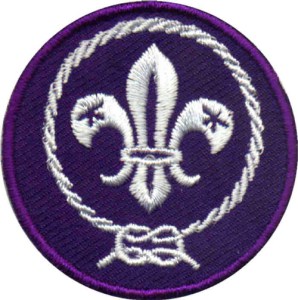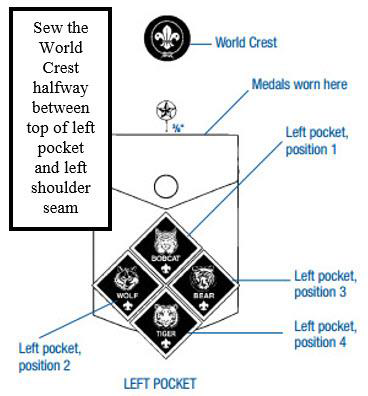Become A Sponsor
|
Why Ads


World Crest This patch has been worn by Scouts since Scouting was founded in 1907. Lord Baden-Powell gave the Scouters on Brownsea Island in the U.K. an early version of this badge. The World Crest is worn by Scouters around the world. Lord Baden-Powell said, “Our badge we took from the ‘North Point’ used on maps for orienteering.” Lady Baden-Powell said, “It shows the true way to go” reminding Scouts to be as true and reliable as the compass. The crest is the fleur-de-lis, the symbol of scouting with the three points of the Scout Oath. The two stars stand for truth and knowledge. The crest is white on a purple background. White represents purity and purple represents leadership and help given to other people. The rope encircling the crest symbolizes unity and brotherhood of Scouters around the world. The rope is tied in a reef, or square knot to represent the strength of being united together and service. The “bond” was added by tying the three parts of the fleur-de-lis together to symbolize the family of Scouting. Every scout wears this patch to remind us Scouting is a world organization. It is a permanent patch worn centered above the left pocket. The BSA donates a small portion of the proceeds from the patch to the World Scout Foundation to help with the development of Scouting in emerging nations. (www.scouting.org; Wikipedia; Bryan on Scouting, February 25, 2015)

FAQ - If the World Crest may be worn by all youth and adults in the BSA, why isn’t the World Crest pre-sewn on BSA uniforms? In summary, Bryan's Blog's (http://blog.scoutingmagazine.org/) answer to the question said: The fee paid by the BSA to WOSM for use of the emblem is based on the cost of the item sold. By selling the patches separately, the fee is a based on the cost of the patch. If it were presewn on a shirt, the fee would be a percentage of the cost of the shirt. Doing that would essentially double the cost of the patch to Scouts and Scouters.
|





